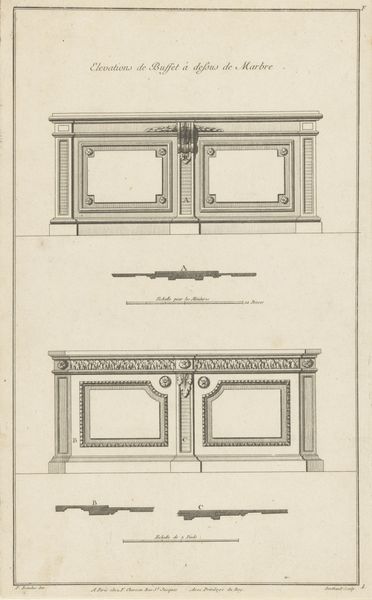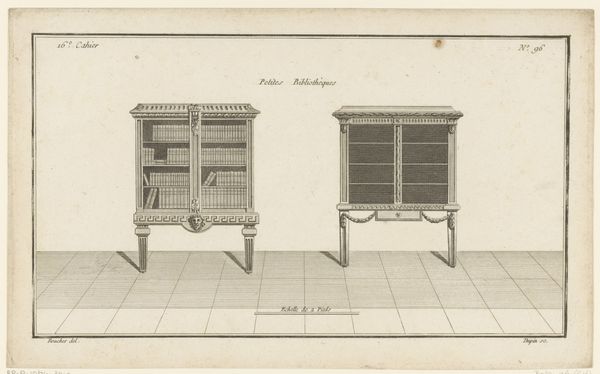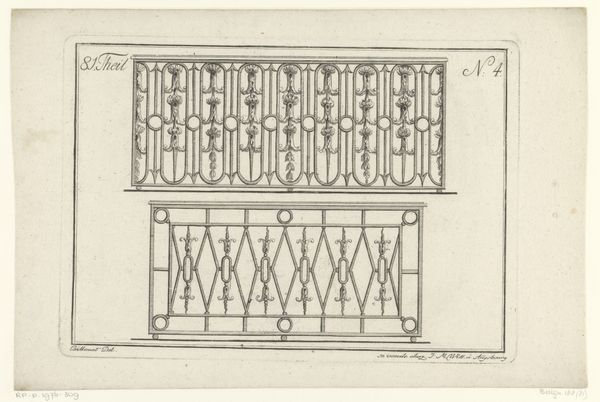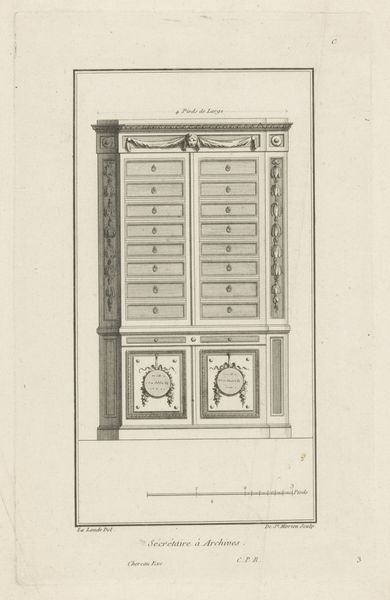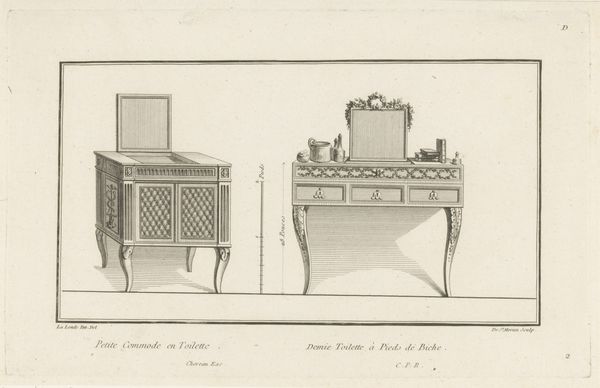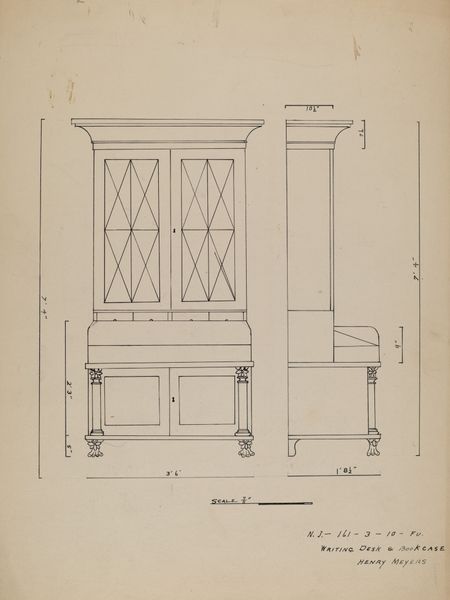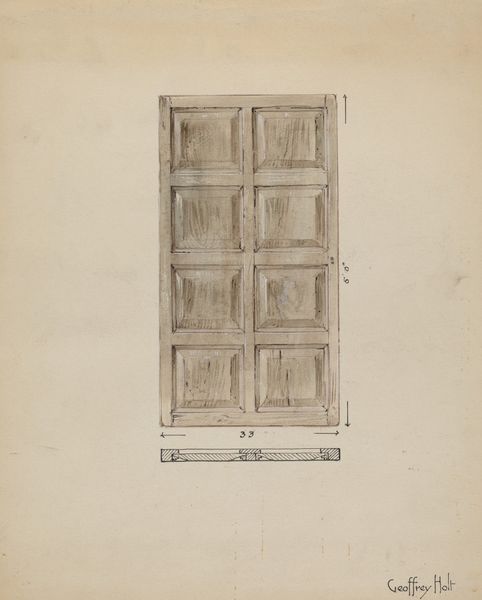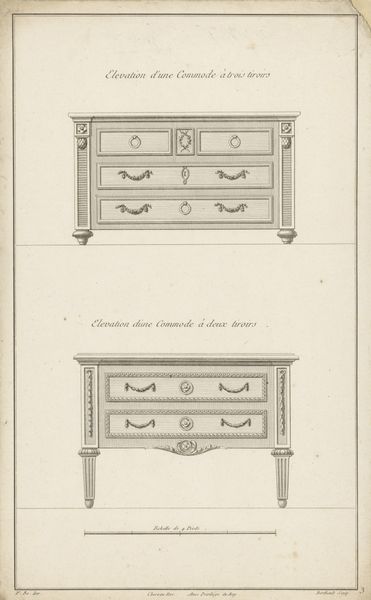
drawing, metal, etching, architecture
#
drawing
#
neoclacissism
#
metal
#
etching
#
etching
#
architectural drawing
#
architecture
Dimensions: height 271 mm, width 185 mm
Copyright: Rijks Museum: Open Domain
Editor: So, here we have an etching titled "Twee ladekasten," or "Two Chests of Drawers," made between 1780 and 1807 by Elias Strasser. It's a very precise architectural drawing; what strikes me most is how clean and orderly it feels. How do you interpret this work? Curator: This etching, made during the height of Neoclassicism, reflects a renewed interest in the aesthetic ideals of ancient Greece and Rome. Considering the socio-political climate of the late 18th century – the Age of Enlightenment, revolutionary fervor brewing – what do you think the artist might be suggesting by referencing such order and symmetry in everyday objects like chests of drawers? Editor: Hmm, maybe a desire for stability? I mean, these designs seem like they’re promoting a return to simpler forms and balanced living amidst social unrest. Is that too on the nose? Curator: Not at all! Neoclassicism often served as a visual language of political and social commentary. By embracing this style for furniture design, Strasser might subtly be promoting order and reason during a period of immense upheaval. Who had access to furniture like this, and what statements were being made in comparison with earlier artistic movements? Editor: That's a good point! These probably weren't for the working class. So, choosing this style might also signal status and taste within a certain class? Almost like they're literally containing the chaos around them, you know, within neat drawers and clean lines. Curator: Exactly. This piece provides us a lens through which to understand how aesthetic choices were deeply entwined with expressions of identity, class, and power dynamics during a transformative period in history. Editor: That makes me see it in a completely different way now. Thanks for opening up this perspective, I learned so much about the significance of art during that era. Curator: And thank you for considering the work's ability to reflect tensions brewing at the time. Always keep in mind how furniture itself acts as an encapsulation of social norms!
Comments
No comments
Be the first to comment and join the conversation on the ultimate creative platform.

